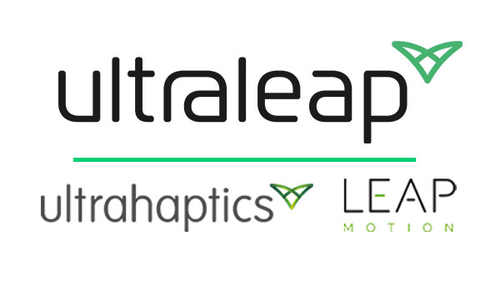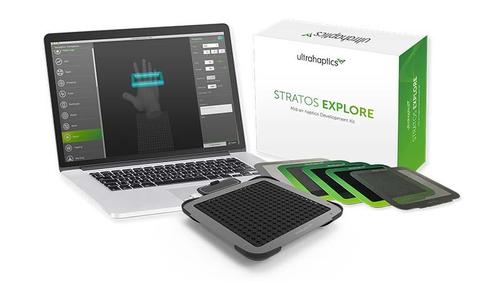What is VR and AR?
“VR” and “AR” stand for virtual and augmented reality. Virtual reality at its essence is the usage of hardware and software to create 3D environments. Instead of looking at a screen like most traditional machines, VR allows people to see these 3D environments like they're physically there. The most common VR setups like the HTC Vive or the Oculus Rift include a headset to portray the visuals and some sort of controller to manage inputs.
On the other hand, augmented reality is the usage of specific hardware and software to alter or add virtual objects and environments to the real world. A good example of the application of augmented reality is Augment's AR viewer app which lets users create virtual versions of furniture to place around the surrounding area. (1) AR technologies have become more and more common in many industries as it is an extremely convenient way to display visual information.
What Is UltraLeap?
UltraLeap is a new company that was created in May 2019, when a company called Ultrahaptic acquired another company called Leap Motion for $30 million USD. (2) They’re currently located in the United States, Japan, and the UK. While the two companies were both focused on hand motion tracking technologies for virtual reality and augmented reality platforms, they did so through different methods. Now they’ve come together to incorporate both of their assets into one firm in hopes of becoming a dominant player in the industry and revolutionizing the way we interact with machines

Leap Motion was focused on creating hand tracking features via 3D optical hand tracking. They were founded in 2010 and released their most recent VR focused hand tracking software, Orion, in February 2016. (3) The software works alongside a special Leap Motion camera that can be affixed onto Oculus Rift and HTC Vive VR headsets. Orion offers extremely accurate hand tracking along with pinching, grabbing and other physical interaction features. And in April 2018, Leap Motion announced Project North Star: an open-sourced, full AR platform with their hand tracking sensor built into the headgear itself. (4)

On the other hand, Ultrahaptic was a firm developing 3D shapes and objects created from ultrasound. In other words, Ultrahaptic could create pseudo 3D objects that could replicate the feeling of touch in mid-air using ultrasounds. These objects could be overlaid with virtual displays from other AR platforms to create holographic interfaces that could be both felt and seen. (5) This is done through a pad with an array of ultrasound transducers and Leap Motion tracking cameras. Ultrahaptics developed the software that incorporates the ultrasound transducers and cameras together in order to create touchable interfaces in mid-air. (6) They have developed 3 different products for sale: the Touch Dev Kit, Stratos Explore Dev Kit, and the Stratos Inspire Haptic Module. The first two products are both development kits, but they use different methods to create mid-air haptics. The Touch Dev Kit uses a method called “amplitude modulation” to create discrete points in space. This is their first generation dev kit and is more suitable for basic haptic objects such as buttons or sliders. (6) While the Stratos Dev Kit uses more advanced techniques that allow for more complex shapes, faster movement of haptic objects, and the addition of different sensations such as static and button presses. On the other hand, the Stratos Inspire Haptic Module is their latest model of commercial haptics hardware. It’s designed to be used in conjunction with the Ultrahaptic Unity plug-in to feel and interact with virtual objects using your hands. (6)

What This Means For You
UltraLeap’s goal isn’t just haptics or hand tracking anymore: they’re commited to providing the world’s first stack of software and hardware for VR and AR spatial interaction. (7). For example, being able to interact with and feel objects in VR without the use of remotes or controllers. Using such technology could be extremely useful in physical rehabilitation treatments or in various entertainment applications. Or having touchable, wearable, and universal AR control panels replacing traditional keyboards, mice, or even smartphones. Because UltraLeap isn’t working with physical objects, they could create AR displays that are compatible and adaptable enough to work with many different devices. Some current usages of UltraLeap’s technology include: Disney’s “Star Wars: Secrets of the Empire” attraction (7); hand-eye coordination treatments for people with Amblyopia (Lazy eye) (8); and the Unreal Garden- one of the most popular VR/AR exhibitions at the 2019 Electronic Entertainment Expo. (9). UltraLeap has some of the world’s most revolutionary VR and AR technology and it’ll be very interesting to see what they’ll do with it.
References:
-
AR Viewer. (n.d.). Retrieved from https://www.augment.com/blocks/ar-viewer/.
- Hayden, Scott. “Ultrahaptics Relaunches as 'Ultraleap' After Leap Motion Acquisition.” Road to VR, 20 Sept. 2019, https://www.roadtovr.com/ultrahaptics-rebrand-ultraleap-leap-motion/.
- Feltham, Jamie. “Leap Motion Announces Orion for Faster, More Accurate VR Hand Tracking.” VRFocus, https://www.vrfocus.com/2016/02/leap-motion-announces-orion-for-faster-more-accurate-vr-hand-tracking/.
- “Unveiling Project North Star.” Leap Motion Blog, 28 June 2018, http://blog.leapmotion.com/northstar/.
- “Discover a New Type of Haptics.” Ultrahaptics, https://www.ultrahaptics.com/products-programs/.
- “STRATOS™ Explore Development Kit.” Ultrahaptics, https://www.ultrahaptics.com/products-programs/stratos-explore-development-kit/.
- “Ultraleap Launches, Ready to Redefine Interaction.” Leap Motion, https://www.leapmotion.com/news/ultraleap-launches-ready-to-redefine-interaction/.
- “Vivid Vision: Curing Lazy Eye with VR Leap Motion.” Leap Motion Blog, 17 Sept. 2019, http://blog.leapmotion.com/vivid-vision-curing-lazy-eye-with-vr-leap-motion/.
- “Multiplayer Mixed Reality: Haptics & The Unreal Garden.” Ultrahaptics, 19 Aug. 2019, https://www.ultrahaptics.com/news/case-study/unreal-garden/.












